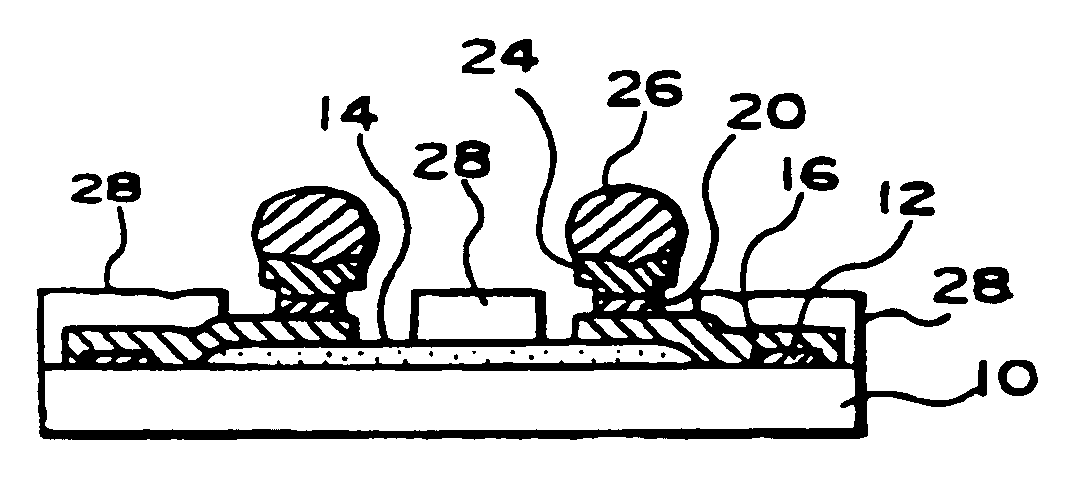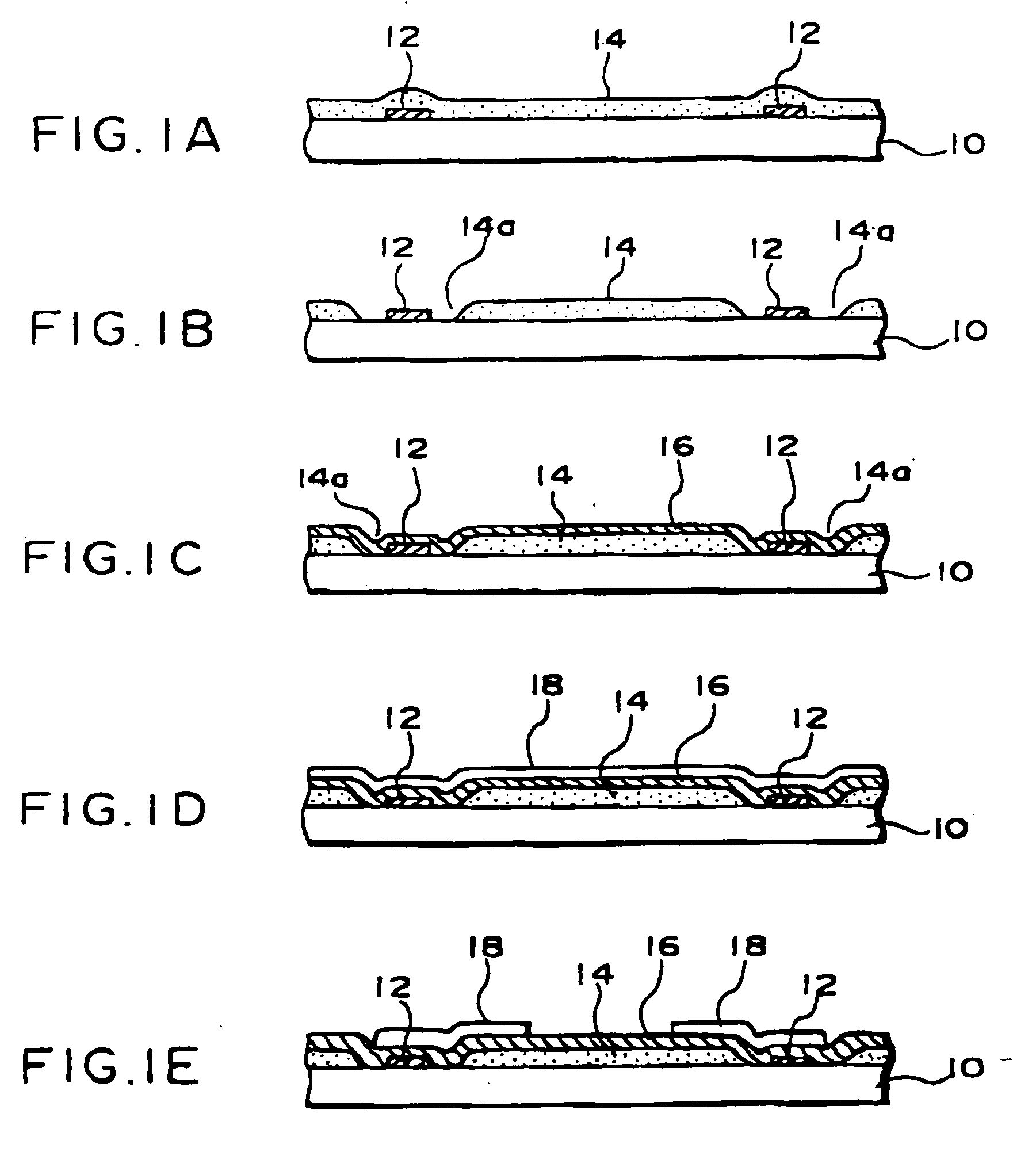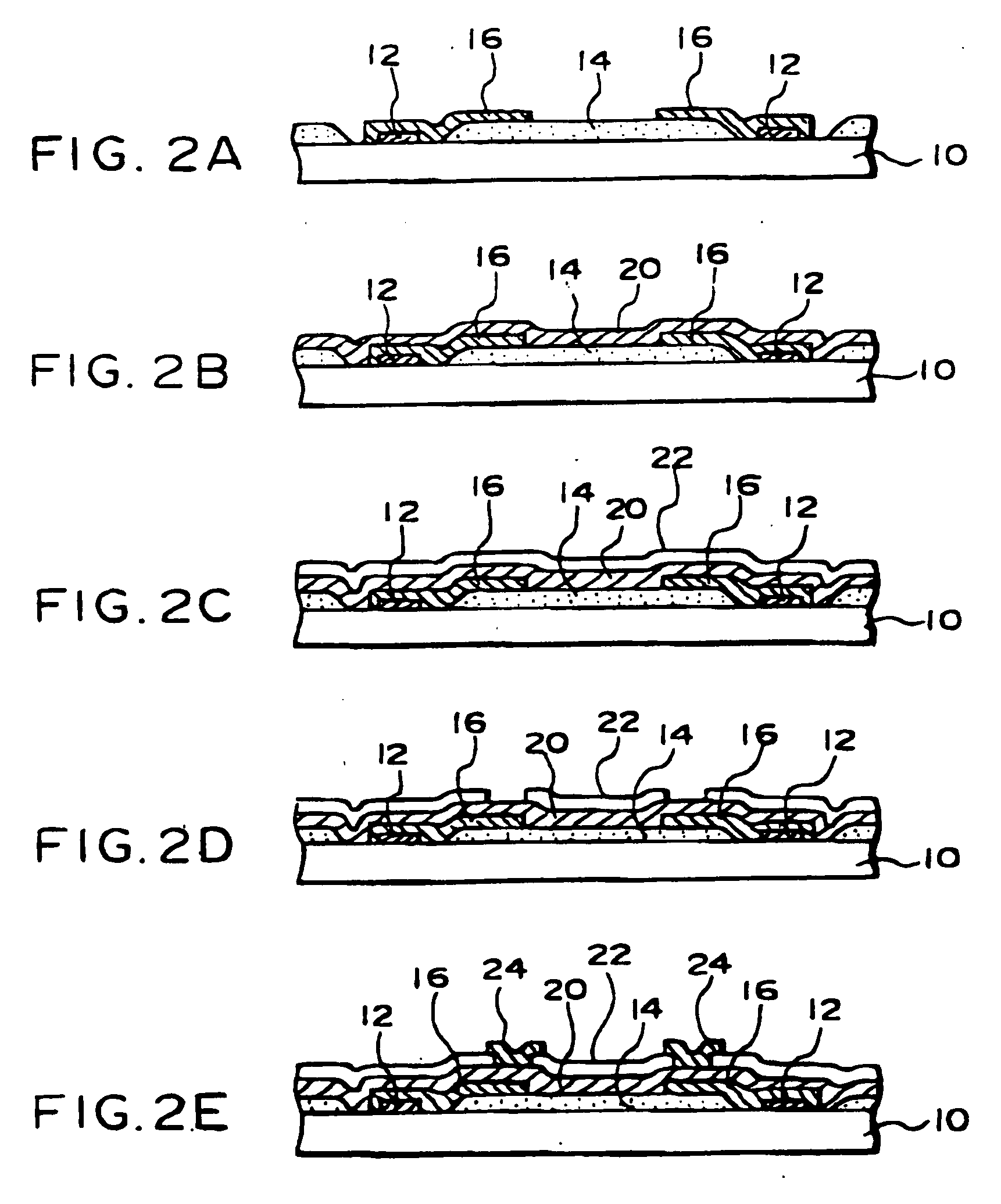Semiconductor device, circuit board, and electronic instrument
- Summary
- Abstract
- Description
- Claims
- Application Information
AI Technical Summary
Benefits of technology
Problems solved by technology
Method used
Image
Examples
first embodiment
[0145] The present invention seeks to further improve on the above described basic art, and the present invention is now described in terms of a number of preferred embodiments, with reference to the drawings.
[0146]FIGS. 14A to 14D illustrate a first embodiment of the present invention.
[0147] In the semiconductor device 150 shown in FIG. 14A, a resin layer 152 of polyimide is formed discontinuously. The resin layer 152 forms a stress relieving layer. As a stress relieving layer, photosensitive polyimide resin is preferable, but a nonphotoaensitive resin may also be used. A material such as a silicone denatured polyimide resin, an epoxy resin, or a silicone denatured epoxy resin that has a stress relieving function having a low Young's modulus (not exceeding 1×1016 Pa) when solidified may be used.
[0148] Besides, in the resin layer 152 is formed a tapered depression 152a. Then wiring 154 is formed along the surface shape of the depression 152a, as a result of which, the wiring 154 ...
second embodiment
[0156] Next, the semiconductor device 190 shown in FIG. 15 is characterized by wiring 200 connecting an aluminum pad 192 and a solder ball 196 provided on a stress relieving layer 194. For the wiring 200 may be used any of the wiring materials selected for the first basic art and the like. This wiring 200 has a bellows-like portion 200a. The bellows-like portion 200a, as shown in FIG. 14D, is in a state that wire includes a slit and a plurality of the bellows-like portion 200a is continuously formed between normal wiring. The bellows-like portion200a has better stress-absorbing properties than the bent wiring 184. By the provision of the bellows-like portion 200a, the occurrence of cracks in the wiring 200 on the semiconductor chip, and damage to the aluminum pad 192 and other active elements is eliminated, and the reliability of the semiconductor device is increased. Besides, since the bellows-like portion 200a is provided in a single wiring, the space required for the stress absor...
third embodiment
[0158] FIGS. 16 to 20 show a third embodiment of the present invention. FIG. 16 shows a cross-section of the semiconductor device of this embodiment. A semiconductor device 300 has a semiconductor chip 302 on which is a multi-layer structure (four layers), and the surface being protected by a solder resist 350. It should be noted that in this embodiment also, materials and manufacturing method, and so on described in other embodiments and in the basic art, may also be applied.
[0159]FIGS. 17A and 17B show the first layer. In more detail, FIG. 17B is a plan view and FIG. 17A is a cross-sectional view along the line VII-VII in FIG. 178. The semiconductor chip 302 has an electrode 304 which inputs or outputs a signal. A stress relieving layer 310 is formed to be inclined at the end thereof, in the vicinity of the electrode. The stress relieving layer 310 is an insulator, and in particular a polyimide resin is preferable. Next, signal wiring 312 is formed from the electrode 304 to over ...
PUM
 Login to View More
Login to View More Abstract
Description
Claims
Application Information
 Login to View More
Login to View More - R&D
- Intellectual Property
- Life Sciences
- Materials
- Tech Scout
- Unparalleled Data Quality
- Higher Quality Content
- 60% Fewer Hallucinations
Browse by: Latest US Patents, China's latest patents, Technical Efficacy Thesaurus, Application Domain, Technology Topic, Popular Technical Reports.
© 2025 PatSnap. All rights reserved.Legal|Privacy policy|Modern Slavery Act Transparency Statement|Sitemap|About US| Contact US: help@patsnap.com



